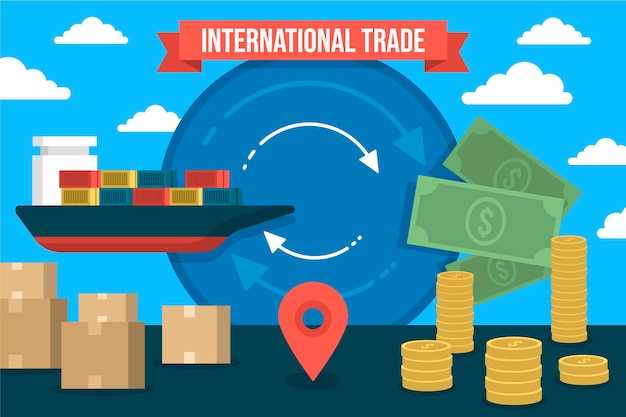
As global trade continues to expand, the import-export industry presents lucrative opportunities for businesses seeking to diversify their revenue streams. However, with great potential comes great risk. Navigating the complex landscape of international trade requires a comprehensive understanding of the challenges that can arise and the proactive measures that can be taken to mitigate them. By implementing robust risk management strategies, importers can safeguard their investments and ensure long-term success in this dynamic marketplace.
1. Enhancing Due Diligence: In the realm of importing, knowledge is power. Conducting thorough research and due diligence on potential suppliers, partners, and markets is essential for minimizing risks. By scrutinizing the financial stability, reputation, and track record of potential business partners, importers can make informed decisions and avoid costly mistakes. Additionally, staying updated on industry trends, regulatory changes, and geopolitical developments can provide valuable insights into potential risks and opportunities.
2. Diversifying Supply Chains: Relying on a single supplier or source for imports can leave businesses vulnerable to disruptions caused by unforeseen events such as natural disasters, political instability, or economic downturns. By diversifying their supply chains and establishing relationships with multiple suppliers, importers can mitigate the impact of such disruptions and ensure a steady flow of goods. This approach also enables businesses to negotiate better terms, reduce costs, and maintain a competitive edge in the market.
3. Implementing Robust Contractual Agreements: Clear and comprehensive contractual agreements are vital for protecting investments in the importing industry. These agreements should outline the rights, responsibilities, and obligations of all parties involved, including provisions for dispute resolution and risk allocation. By working closely with legal professionals experienced in international trade, importers can ensure that their contracts are enforceable and provide adequate protection in the event of unforeseen circumstances.
4. Utilizing Insurance and Financial Instruments: Importers can further mitigate risks by leveraging insurance and financial instruments specifically designed for the import-export industry. Trade credit insurance, for example, provides protection against non-payment or insolvency of buyers, while cargo insurance safeguards against loss or damage during transportation. Additionally, importers can utilize financial tools such as letters of credit or bank guarantees to minimize the risk of non-payment and ensure timely receipt of funds.
5. Embracing Technology and Automation: The digital age has revolutionized the importing industry, offering innovative solutions for risk management. By embracing technology and automation, importers can streamline their operations, enhance transparency, and reduce the likelihood of errors or fraud. Advanced analytics and data-driven insights can also enable importers to identify potential risks, optimize supply chain processes, and make informed decisions based on real-time information.
In conclusion, successful risk management in the importing industry requires a proactive and multifaceted approach. By enhancing due diligence, diversifying supply chains, implementing robust contractual agreements, utilizing insurance and financial instruments, and embracing technology, importers can effectively mitigate challenges and protect their investments. By staying vigilant and adaptable in an ever-evolving global marketplace, importers can position themselves for long-term success and sustainable growth.
Understanding the Importing Landscape: Identifying Potential Risks

Exploring the intricate terrain of importing goods involves a comprehensive understanding of the potential hazards that may arise. By delving into the multifaceted realm of international trade, importers can gain valuable insights into the various challenges that may jeopardize their investments. This section aims to shed light on the diverse aspects of the importing landscape, enabling importers to identify and navigate potential risks with precision and foresight.
Unveiling the Complexities:
Embarking on an importing venture necessitates a deep comprehension of the intricate web of factors that shape the import landscape. From fluctuating market dynamics to regulatory frameworks, importers must navigate through a labyrinth of complexities. By gaining a holistic understanding of the import ecosystem, importers can proactively identify potential risks and devise effective strategies to mitigate them.
Spotting Vulnerabilities:
Within the import landscape lie hidden vulnerabilities that can pose significant risks to investments. These vulnerabilities can manifest in various forms, such as supply chain disruptions, geopolitical uncertainties, or economic fluctuations. By honing their ability to spot these vulnerabilities, importers can preemptively address potential risks and safeguard their investments.
Anticipating Market Volatility:
The import landscape is inherently susceptible to market volatility, which can have far-reaching implications for importers. Fluctuations in currency exchange rates, trade policies, and global economic conditions can significantly impact the profitability and viability of import ventures. By developing a keen sense of market trends and anticipating potential volatility, importers can proactively adapt their strategies to minimize risks and maximize returns.
Understanding Legal and Regulatory Frameworks:
Importing goods across international borders necessitates compliance with a myriad of legal and regulatory frameworks. Failure to navigate these frameworks effectively can result in legal penalties, shipment delays, or even confiscation of goods. By gaining a comprehensive understanding of the legal and regulatory requirements of target markets, importers can ensure compliance and mitigate the risks associated with non-compliance.
Embracing Technological Advancements:
The import landscape is constantly evolving, with technological advancements playing a pivotal role in shaping its dynamics. Embracing innovative technologies, such as blockchain, artificial intelligence, and data analytics, can empower importers to streamline their operations, enhance transparency, and mitigate risks. By harnessing the power of technology, importers can stay ahead of the curve and navigate the import landscape with agility and resilience.
Conclusion:
Understanding the complexities and potential risks within the importing landscape is crucial for importers to protect their investments and ensure sustainable growth. By delving into the intricacies of international trade, importers can proactively identify and address potential risks, enabling them to navigate the import landscape with confidence and success.
Developing a Comprehensive Risk Mitigation Strategy
In today’s global business landscape, it is crucial for importers to establish a robust framework for identifying and addressing potential risks associated with their operations. By developing a comprehensive risk mitigation strategy, importers can safeguard their investments and navigate the challenges that arise in the importing process.
Creating a holistic approach to risk mitigation involves a proactive assessment of potential threats and the implementation of effective measures to minimize their impact. This entails identifying and understanding the various factors that can pose risks to the importing process, such as regulatory changes, supply chain disruptions, and currency fluctuations.
One key aspect of developing a comprehensive risk mitigation strategy is the establishment of clear communication channels and collaboration with stakeholders involved in the importing process. This includes suppliers, logistics providers, and legal experts who can provide valuable insights and support in managing potential risks.
Another crucial element is the adoption of risk assessment tools and techniques that enable importers to identify and evaluate potential risks. These tools can range from market research and data analysis to scenario planning and risk mapping, allowing importers to make informed decisions and allocate resources effectively.
Furthermore, it is essential for importers to continuously monitor and review their risk mitigation strategies to ensure their relevance and effectiveness. This involves staying updated on industry trends, regulatory changes, and emerging risks, as well as regularly evaluating the performance of implemented risk mitigation measures.
Ultimately, developing a comprehensive risk mitigation strategy is an ongoing process that requires a proactive and adaptable approach. By taking proactive measures to identify, assess, and address potential risks, importers can protect their investments and enhance their ability to navigate the complexities of the importing landscape.
Assessing Financial Risks: Currency Fluctuations and Payment Issues
In the realm of international trade, it is crucial for importers to be aware of the potential financial risks they may encounter. This section focuses on two significant aspects that demand careful assessment: currency fluctuations and payment issues. Understanding and effectively managing these risks can help importers safeguard their investments and ensure smooth operations.
One of the primary financial risks importers face is currency fluctuations. As goods are purchased from foreign suppliers, the value of the currencies involved can fluctuate, impacting the overall cost of the imported goods. These fluctuations can either work in favor of the importer, resulting in cost savings, or against them, leading to increased expenses. It is essential for importers to monitor exchange rates and employ appropriate hedging strategies to mitigate the potential negative effects of currency fluctuations.
Payment issues also pose a significant financial risk in the importing process. Importers must carefully consider the payment terms and methods agreed upon with their suppliers. Delays or complications in payments can disrupt the supply chain, strain relationships with suppliers, and even result in financial losses. It is crucial for importers to establish clear payment terms, ensure secure payment methods, and maintain open lines of communication with suppliers to address any payment-related issues promptly.
To assess and manage these financial risks effectively, importers can employ various strategies. Conducting thorough market research and analysis can provide insights into the stability and trends of foreign currencies, enabling importers to make informed decisions. Additionally, establishing strong relationships with financial institutions and seeking expert advice can help importers navigate the complexities of currency fluctuations and payment issues.
- Regularly monitoring exchange rates and economic indicators
- Implementing hedging strategies to mitigate currency risks
- Establishing clear payment terms and secure payment methods
- Maintaining open communication with suppliers regarding payment issues
- Seeking expert advice and building relationships with financial institutions
By assessing and addressing the financial risks associated with currency fluctuations and payment issues, importers can protect their investments and ensure the smooth flow of goods in the importing process. Proactive risk management in these areas is crucial for importers to navigate the challenges of international trade successfully.
Managing Legal and Regulatory Risks: Compliance and Documentation
In the realm of international trade, navigating the legal and regulatory landscape is crucial for importers to ensure compliance and protect their investments. This section explores the various challenges associated with managing legal and regulatory risks in the importing process, and highlights the importance of proper documentation.
Understanding Legal and Regulatory Risks
When engaging in import activities, businesses face a multitude of legal and regulatory risks that can have significant implications on their operations and financial stability. These risks encompass a wide range of areas, including customs regulations, trade agreements, product safety standards, intellectual property rights, and export controls. Non-compliance with these regulations can result in penalties, delays, loss of reputation, and even legal action.
Ensuring Compliance through Documentation
One of the key strategies for managing legal and regulatory risks in importing is through meticulous documentation. Accurate and comprehensive documentation serves as evidence of compliance and helps importers demonstrate their adherence to applicable laws and regulations. This includes maintaining records of import licenses, permits, certificates of origin, shipping documents, and any other relevant paperwork.
| Benefits of Documentation | Challenges in Documentation |
|---|---|
| 1. Facilitates customs clearance | 1. Ensuring accuracy and completeness |
| 2. Supports claims for preferential trade agreements | 2. Language and translation issues |
| 3. Enables effective risk assessment and management | 3. Keeping up with changing regulations |
| 4. Provides evidence in case of disputes | 4. Storage and retrieval of documents |
However, managing documentation comes with its own set of challenges. Importers must ensure the accuracy and completeness of the information provided, as any discrepancies can lead to delays or penalties. Language and translation issues may arise when dealing with international suppliers or customs authorities. Additionally, importers need to stay updated with changing regulations to ensure their documentation remains compliant.
In conclusion, managing legal and regulatory risks in importing requires a proactive approach that emphasizes compliance and documentation. By understanding the potential risks and challenges, importers can take the necessary steps to protect their investments and maintain a smooth and efficient import process.
Evaluating Operational Risks: Logistics and Supply Chain Management
In the realm of importing, it is crucial to assess and analyze the potential challenges and uncertainties that may arise in the operational aspects of logistics and supply chain management. By evaluating these operational risks, businesses can effectively navigate the complexities of international trade and safeguard their investments.
1. Assessing Transportation Risks
Transportation plays a pivotal role in the import process, and it is essential to evaluate the associated risks. This includes considering the reliability and efficiency of transportation modes, such as sea freight, air freight, or land transportation. Evaluating the potential for delays, disruptions, or damage to goods during transit can help importers make informed decisions and implement appropriate risk mitigation strategies.
2. Analyzing Inventory Management Risks

Efficient inventory management is crucial for importers to meet customer demands while minimizing costs. However, it is important to evaluate the risks associated with inventory management, such as stockouts, overstocking, or obsolescence. By conducting a thorough analysis of inventory turnover, demand forecasting, and supplier reliability, importers can mitigate these risks and optimize their supply chain operations.
3. Evaluating Supplier Risks
Importing involves establishing relationships with suppliers from different countries, which introduces a range of potential risks. It is essential to evaluate the reliability, financial stability, and ethical practices of suppliers to ensure a smooth and sustainable supply chain. Assessing the risks associated with supplier quality, delivery delays, or sudden changes in pricing can help importers make informed decisions and establish robust supplier management strategies.
4. Considering Regulatory and Compliance Risks
International trade is subject to various regulations and compliance requirements, which can pose significant risks for importers. It is crucial to evaluate the potential challenges related to customs regulations, import/export restrictions, and documentation compliance. By staying updated on the evolving regulatory landscape and implementing effective compliance measures, importers can mitigate the risks associated with non-compliance and ensure a seamless import process.
- Assess transportation risks
- Analyze inventory management risks
- Evaluate supplier risks
- Consider regulatory and compliance risks
By thoroughly evaluating these operational risks in logistics and supply chain management, importers can proactively identify potential challenges and implement appropriate risk mitigation strategies. This enables them to protect their investments, enhance operational efficiency, and maintain a competitive edge in the global market.

